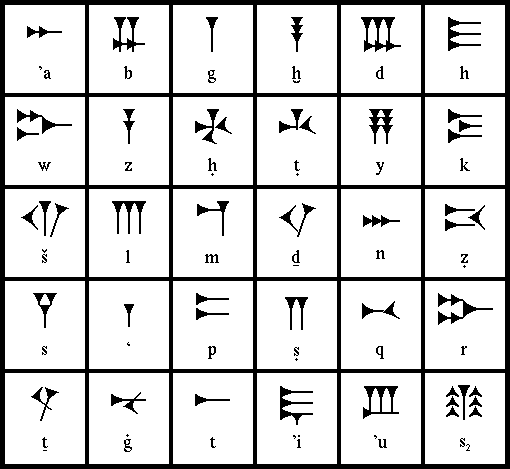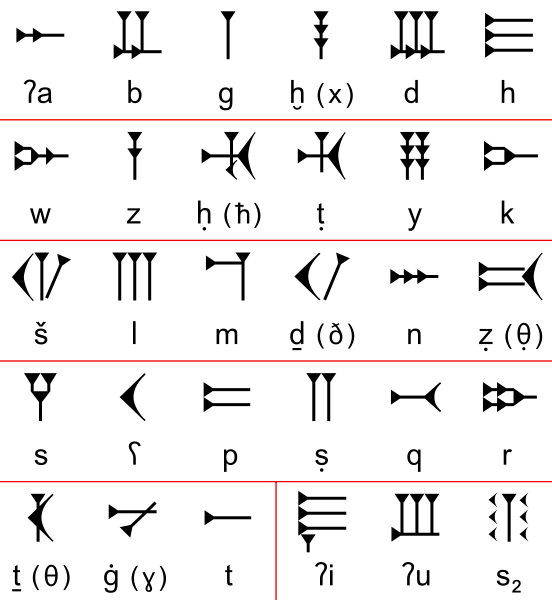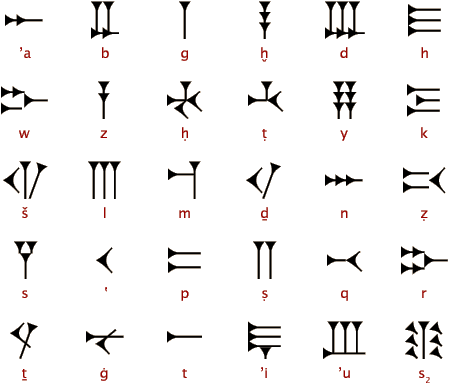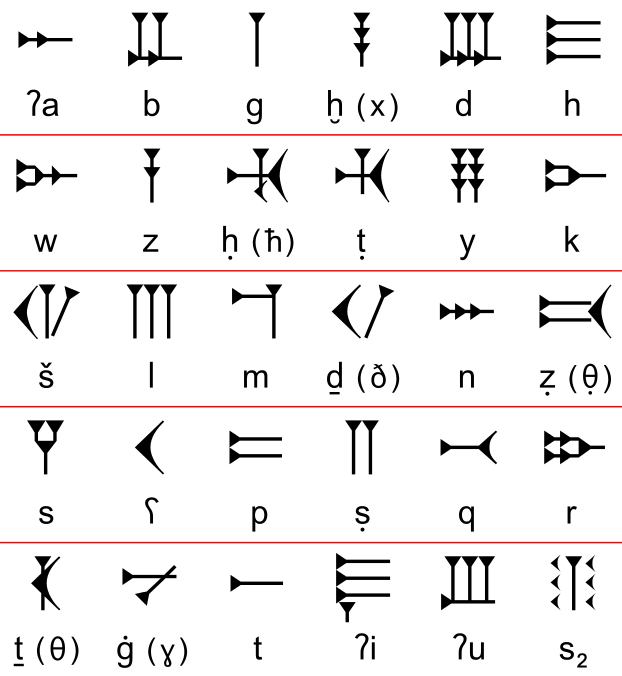TYPE DESIGN INFORMATION PAGE last updated on Sat Jul 20 14:52:59 EDT 2024
FONT RECOGNITION VIA FONT MOOSE
|
|
|
|
Ugaritic
Ugaritic is a Northwest Semitic language discovered by French archaeologists in 1929. It is known almost only in the form of writings found in the ruined city of Ugarit (today, Ras Shamra, Syria). It has been used by scholars of the Hebrew Bible to clarify Biblical Hebrew texts and has revealed ways in which the cultures of ancient Israel and Judah found parallels in the neighboring cultures. Wikipedia: The Ugaritic alphabet is a cuneiform script used beginning in the 15th century BC. Like most Semitic scripts, it is an abjad, where each symbol stands for a consonant, leaving the reader to supply the appropriate vowel. Although it appears similar to Mesopotamian cuneiform (whose writing techniques it borrowed), its symbols and symbol meanings are unrelated. It is the oldest example of the family of West Semitic scripts such as the Phoenician, Paleo-Hebrew, and Aramaic alphabets (including the Hebrew alphabet). The so-called "long alphabet" has 30 letters while the "short alphabet" has 22. Other languages (particularly Hurrian) were occasionally written in it in the Ugarit area, although not elsewhere. Clay tablets written in Ugaritic provide the earliest evidence of both the Levantine ordering of the alphabet, which gave rise to the alphabetic order of the Hebrew, Greek, and Latin alphabets; and the South Semitic order, which gave rise to the order of the Ge'ez script. The script was written from left to right. |
EXTERNAL LINKS |
| | |

file name: Ugaritic Alphabet

file name: Ugaritic Alphabet

file name: Ugaritic Alphabet

file name: Ugaritic Alphabet
| | |
|
Luc Devroye ⦿ School of Computer Science ⦿ McGill University Montreal, Canada H3A 2K6 ⦿ lucdevroye@gmail.com ⦿ http://luc.devroye.org ⦿ http://luc.devroye.org/fonts.html |
